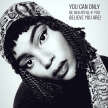
I decide to take my field notes and gather my data at a family gathering. For this observation, I was a participant observer, but the participants did not know that they were being observed. I chose to be this kind of observer because I wanted to study how they behaved and socialised in their natural state without them limiting themselves and being aware of their actions and words. I chose to observe my family in this particular situation because I knew that the activities that were going to be done were very cultural. The African culture and traditions are supporters of male dominance, and because of this I wanted to see how the different roles are distributed amongst the men as well as the women and children during the ceremony.
For this writing, I will start off by giving my critical analysis of the data, that I collected through my observation. The critical analysis will describe the place, the people and will also outline the hierarchies between the different groups. Second will be the reflexive discussion, where I will share my experience, my overall interpretation of the of the traditions and will also form part of my conclusion.
Critical Analysis:
I would first like to state that what I am about to explicate is solely what I saw as it is not biased. The time I took the field notes, I did not consider my perspective, I wrote everything the way it was.
As I am writing this I will try my best to limit my preconceptions and standpoints when narrating the participants for this observation. It was a one-day trip as the ceremony only lasted a day. I spent the whole day at the family gathering and because of this I will highlight the important and interesting parts about the day.
The ancestral ceremony is very important in the African cultures because it is an extension in the belief of respect to their elders. It is believed that the ancestors maintain a good relationship with the living relatives. The ancestral spirits are usually kind but will send a sign that is not too harmful as an indication that the family or individual is going toward the wrong direction. As Africans we show our appreciation for the guidance and achievements by slaughtering an animal and having a gathering.
The ceremony took place on Saturday the 27th of April 2019. It initially started the night before, on Friday 26th of April 2019. We were at our grandparents’ house in Orange Farm. My grandparents house is not the nicest house but the warmth of it blurs out its imperfections. The house, however is not exactly a house, it is a set outside rooms and a double garage. The home is like that because my grandparents are waiting for their RDP house to be built. An RDP house is a house that the government builds for the previously disadvantaged to correct the injustices of the past caused by the apartheid government. The garage, because of its size is used as the kitchen and living room area and the other outside rooms are used as bedrooms and they also have two outside bathrooms, one with a toilet and shower and the other one with a toilet and bathtub and there are four bedrooms in total. All rooms are fully furnished but the quality of the furniture is not the best. They have pictures of my great grandparents hanging on the wall. The couches are not the prettiest, they were torn and have stains. The kitchen cupboards were made of steal and were grey in colour, they looked clean and everything was in its right place. The bedrooms were kept clean.
When we got to the house on Friday night, my other family was already there. My grandfather’s older sister was there. I found her sitting on the worn-out couch and having tea. She had on a “werks univorm” which is a worker’s uniform in Afrikaans. By the looks of things, she was the prestigious one of all of us because the was the one spoken to the most. She had more knowledge than the all of us when it came to customs of the ceremony. She guided everyone and assigned tasks to all of us. As the grandchildren, because we did not understand why certain things had to be done a certain way, she explained everything to us.
She expressed the importance of Umqombothi also known as “traditional beer.” The rituals are not complete without the traditional beer as it the foundation for every ceremony. It is used to communicate with late members of the family and to celebrate them. Following which she showed the grandchildren the meticulous process of making the traditional beer. She said that ancestors would not recognise the ceremonies and rituals if the traditional beer is not there. She went further and told us that the traditional beer is usually made but the Makoti, the latest wife of the family, but that day she did not have to prepare it because I was going to be taught how to make it. The traditional beer is made of Ting (maize) porridge, maize malt, sorghum salt, yeast and water. The Ting is a sour porridge that is made by mixing maize and boiling water in an airtight container. The porridge is then left to go sour and then the other ingredients are added, and it is left to brew overnight and then the following day it is sifted and put in a big barrel. Some of the traditional beer is put in a clay pot which is put on the uMsamo which is a shrine that has other items of importance when communicating with, and celebrating the ancestors. (figure 1)

Figure 1: Soweto Backpackers. 2018. #Umqombothi. https://twitter.com/SowetoByBike/status/1057573011962974210 Date of Access:03 May 2019
The slaughtering of the cow was assigned to the men. Since the ancient times males have been seen as being physically stronger than their female counterparts. It is for this reason that males have been the ones to slaughter the cow. The alfa male was the one that wedged the knife into the neck of the cow and killed instantaneously. The cow then is skinned and chopped up into different parts which will be cooked by the women. The differently prepared parts of the meat were then distributed among the family depending on their age and gender. The men got the head of the cow and the hooves. There is a saying that goes “Indoda Ifanele Idle Umhluzo” which means that a true man has to eat the meat of the head of the cow, showing that the men are the heads of the households. The women were then given the liver of which they ate with pap. The children were given the intestines of the cow, of which they ate them with pap. The gall bladder was thrown away, but if someone was going through initiation, they would have put it on the theirs heads. The skin was taken to be dried by sprinkling salt on the inner side the skin then they put it on top of the roof. Sometimes the cow skin is cut in a way that they can make a bracelet like bangle known as a Sphandla. The Sphandla is a symbol of connection to the ancestors.

Figure 2: Paul Botes, M&G. 2016. Cows: The sacred and profane. https://mg.co.za/article/2016-04-07-cows-the-sacred-and-the-profane Date of Access: 03 May 2019
The food that was prepared was very simple. It was seasoned with salt only. The meat was served with pap and cabbage and wild spinach “Morogo.” Before the meat was served, the men were given a bowl in which to wash their hands. This was a clear sign that men were the more dominant characters in their families. The men were served first of which they were served in three big trays and were given a big bowl of water which they then used the water to wash their hands. The one tray had a mountain of meat, the other tray had a mountain of pap and the last tray had the cabbage and wild spinach. The men all ate together outside, while the women at inside the house, the kitchen specifically because the women are said to belong there.(highlight prestige)
The dress codes also fascinated me. The dress code for the women was more strict than for the men and children. The women had to have their legs and shoulders covered up. They also wore head wraps as a sign of respect to their husbands as my grandfather’s older sister told me. The girls only wore short skirts and beads, the did not wear tops and had their breasts exposed as a symbol of pureness. The males wore whatever they wanted. The older men wore long pants as a sign of respect to their wife and to show that they are “true men.”
The was no music, however, the women were singing while cooking. And while the women were cooking, the children were told stories by the grandparents. The storytelling seemed to play an important role in maintaining our culture, as some of the stories described the activities of the day, such as women cooking and men slaughtering the animals. The stories were told by the old women who were no longer strong enough to cook. The older women sat on the chairs while the children sat on the floor and surrounding them. The other women did not have any storybooks, they told the stories on top of their heads. This shows that they had been telling the stories for a really long time. These stories teach the grandchildren on how to behave themselves and what to do in certain situation when the grandparents are no longer alive.
The ceremony helped with making sure that culture continues and does not die. It helped the children by socialising them. Above I have explained the rules when it comes to the African traditions.






Comments
There are no comments for this story
Be the first to respond and start the conversation.